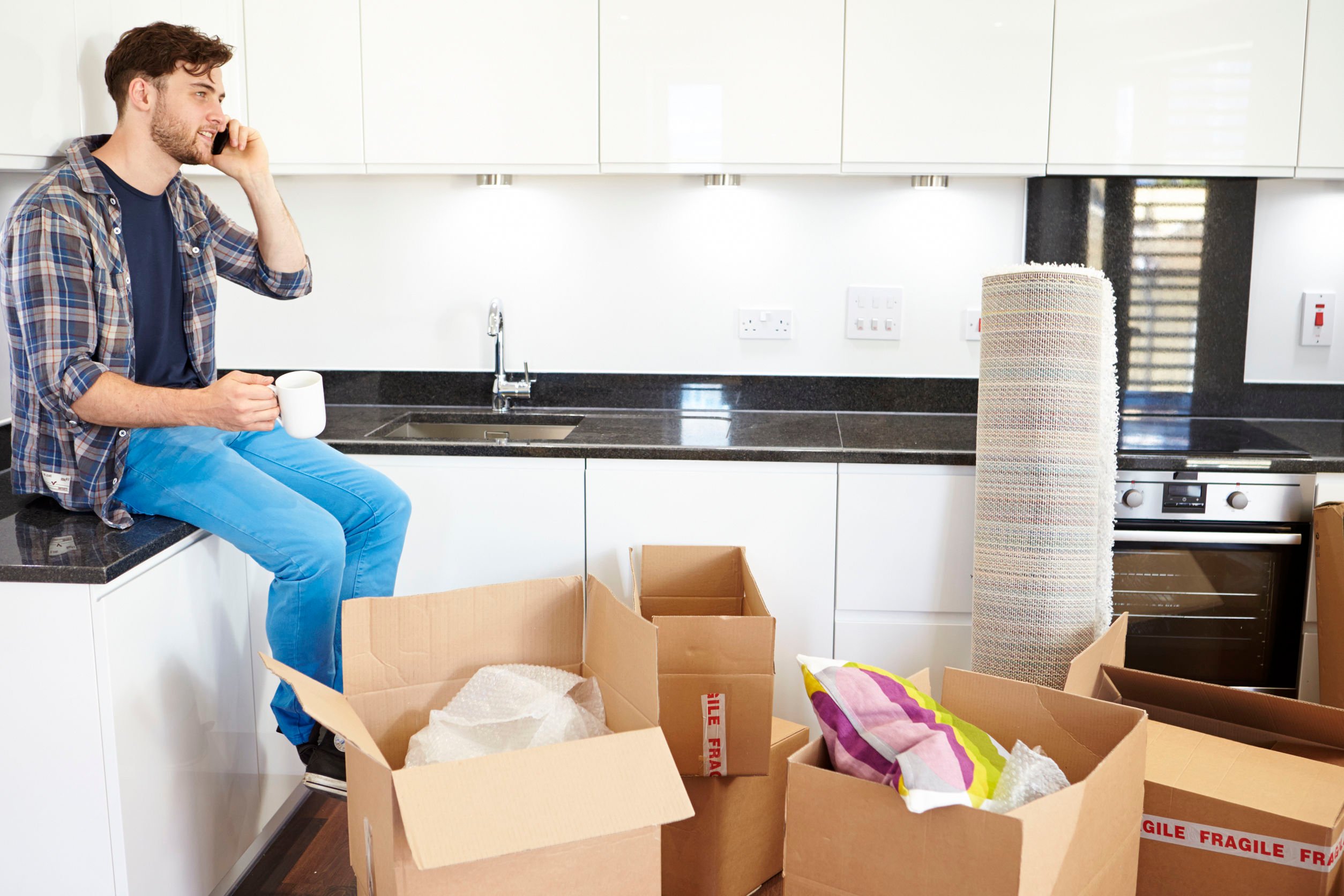To successfully pack your own belongings, whether for a short or long-distance move, you basically need common sense, patience and good moving boxes. Above all, promise yourself that you won’t let the experience become a stress-filled event. Remember, almost everything you own was once shipped in a box, so just take a deep breath and know you’re going to be more streamlined and organized after you’ve successfully sorted, packed, inventoried and moved what you own.
Keep in mind that every room in your house is basically a big box. And now you’re simply going to reorganize each room’s contents into smaller, more compactly filled boxes that will be temporarily stored and shipped via a moving truck—another form of a moving box that just happens to be on wheels! Here are ten helpful packing tips to get you started.
-
Right Box for the Right Item
In case you haven’t visited a moving supply company lately, here’s a newsflash: there’s a specially designed moving box for just about every item in your house. We’ve even seen aquarium moving kits. So if you’re in doubt about what type of boxes you need, simply make up a list of what you have and visit a moving supply company, either in person or online. In addition to small, medium and large boxes, they’ll have everything from china boxes for your special glassware and flatware to art boxes for your favorite framed pieces and mirrors.
-
When in Doubt, Wrap It Up
If you’re worried about something getting broken or scratched in the course of your move, then wrap it separately in clean newsprint. Most moving supply stores sell clean sheets of newsprint by the box. It can also be crumpled up as a cushion in the bottom, top and sides of boxes. And for those with a green conscience, remember that while only certain types of packing peanuts are recyclable, virtually all newsprint can be recycled.
-
Disassemble, But Don’t Separate
For items like curtain rods and shelving with screws and brackets that you don’t want to lose in transit, be sure to put all loose items in a small plastic bag and attach them to the larger item with tape or string. This way, when you unpack, you’ll have everything you need to reassemble the piece as it comes out of the box.
-
Pack to Fill, Not Bulge
Every box you pack should form a neat part of an overall wall of boxes you or your movers are going to build inside your moving truck. Naturally, heavier boxes will fill in the bottom rows while the lighter boxes go on top. But under no circumstances should you over or under pack boxes so they become malformed with bulges or crushed in by empty spaces. As a rule of thumb, if contents are shaking around loosely or sticking out from a box when you pick it up, then it’s not properly packed.
-
Fragile, Expensive and Odd Pieces
For any valuable, oddly shaped or fragile items, try to form a layer of cushions around them by using old towels, newsprint or bedding. And if you’re not sure about a piece you truly value, don’t be afraid to ask the advice of a professional mover. Even if it means having a custom-built box for that antique cuckoo clock you inherited from your grandparents, it’s worth knowing that piece is going to have a great time in your new home.
-
Books and Heavy Objects
If you over-pack boxes and they break open, then you’re not saving yourself time or money. Spread out things like textbooks and oversized coffee table books with smaller paperbacks. Also, use small book boxes for these heavy items, so each box never exceeds its intended weight limit.
-
Garments and Wardrobes
If you use wardrobe boxes, then you can simply keep your clothes on hangers and transfer them directly onto the crossbar in the box. This way, your clothes arrive in the same shape they left, and you can immediately hang them in your new closet. Just like the rule about book boxes above, don’t over stuff the bottoms of wardrobe boxes with heavy items like shoes, or you’ll risk them breaking open during transit.
-
Appliances and Large Items
Most appliance manuals contain instructions for preparing these large items for a move. If you can’t find the original manual for a washer, dryer or refrigerator, do an Internet search and you’ll be sure to find a downloadable manual or at least the manufacturer’s information line. In almost every case, you’ll want to disconnect the item from its power source and let it drain well before moving day.
-
Computers and Electronic Devices
More and more people are saving the boxes their desktop computers, laptops and gaming equipment were originally packed in. And that’s a smart move, especially since the original box usually is the best way to immobilize and protect any electronic device during a move. If for some reason you’ve thrown out those boxes, be sure to use sufficient bubble wrap or other packing materials and sturdy boxes to protect these high-end items.
-
Tape, Markers and Inventory
Before you close even one box, have good packing tape, a thick magic marker and an inventory list handy. Mark each box with a brief description of its contents and the room it’s going to, then seal it up with tape and number it. Note each box’s number and contents on your inventory as well. For everything from ease of unloading to insurance purposes, this level of proper recording will make your move as stress-free as possible.
Don’t be afraid to ask the professionals for help when you need it; and enjoy the experience of moving into your next place with a new level of personal organization.
Brought to you by MyMove. Visit MyMove.com for a customizable moving checklist, hand-picked deals and advice from the pros. Have a less expensive, less stressful move.







